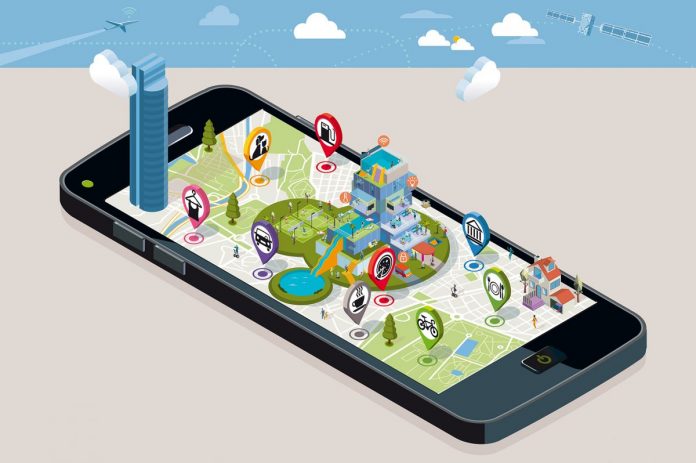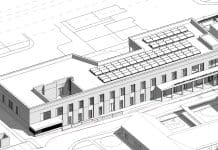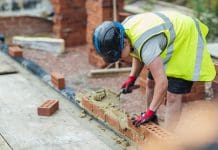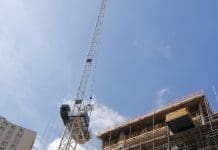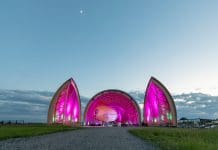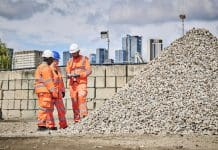Implementing BIM and a sustainability strategy has wider benefits resulting in an opportunity to connect buildings, spaces, places, people and communities argues Dr Susie Tomson, Sustainability Director at PCSG
To some, BIM is a tool for improving the efficiency of designing and constructing a built asset – an office, a railway station, a tunnel, a school; but to many of us, it’s a hugely powerful product, process and way of collaborating. Implementing BIM and a sustainability strategy has wider benefits and focusing on just CAPEX – and even OPEX – is to miss the point.
The mandated use of BIM Level 2 for all public sector projects has got the ball rolling, and the UK now has the biggest cohort of skilled data-aware engineers, designers and suppliers which put our industry in a very strong position globally. Driven by the Digital Built Britain programme (led by PCSG’s Mark Bew), built environment professionals must now embrace the next stage of the digital information management transformation, enabling better social and environmental outcomes for the benefit of citizens and the economy. Implementing BIM and a sustainability strategy together can reap extra benefits.
So what does this look like?
BIM not only allows for improved efficiency of design, construction and operation of an asset, it also enables longer term performance – and significantly, cost – benefits to be considered, designed in and measured across the asset’s whole life cycle. For example, at a basic level, huge improvements to sustainability can be delivered through embedding a circular economy of the asset and its constituent components.
My colleague Steve Thompson has been leading the field in this area, developing the Construction Products Association’s LEXICON work, which provides a consistent approach to describing product information in plain language terms. It already has the support of over 70% of construction product trade associations to ensure those with the expertise identify what information should be shared. One by-product of this will be to encourage a more circular economy – knowing where products are, how they are performing, when they need replacing and how they can be disposed of or remanufactured as well as schedule the work.

My work supporting Sir Ben Ainslie’s America’s Cup team – Land Rover BAR is a good example of how the construction of the new team base in Portsmouth to BREEAM excellent underpins the team’s sustainability focus, and the approach to BIM played a key role in this. Led by HGP Architects, the BIM methodology drove collaboration and delivered an approach which was nimbler and better at problem-solving. The BIM and a sustainability strategy with building performance targets will keep the team true to the excellent standard achieved during construction. The team’s performance with a clear objective (to win the America’s Cup and bring the next event to Portsmouth) in some ways is simple to measure.
The video case study by the Building Research Establishment team shows BREEAM teamed with BIM made a real difference.
The challenge beyond design and build, highlighted by Innovate UK’s own research, is on building performance and an area we continue to explore is how BIM can help to address this. We believe with this greater knowledge of how products are performing in-use, we can help eliminate the gap between the as-designed and as-built performance of buildings and provide more energy efficient assets.
Can we close the performance gap? Yes, we can! But not without the missing link – people.
Once the building is built, it’s (almost) all about people. People who occupy the building, use the facilities to live, work, learn, exercise, recover or relax, and those who maintain it and run the show. And their performance is about light, energy, air quality, health, wellness and their overall comfort. This is the real performance measure of an asset: is it fit for purpose, does it meet the brief, is the outcome ‘better’?
Our communications expert, John Twitchen, leads our Innovate UK project which is focusing on addressing the energy performance gap of new buildings through a process of combining information about the building, the weather and people, focusing on comfort and influencing attitudes, behaviour and culture through ‘smart nudges’ via an app. The aim is to improve comfort, by engaging occupants with the building and understand the performance and design of the building as well as learning a little about their likes and dislikes – the eventual outcome being to improve the performance of the people in a building allowed to operate as designed.
However, this is still glorious isolation, considering an individual asset. How do the people get there, what about the weather, traffic, outside air quality, parking, food and drink, energy and water supply? What about the spaces and places?
Digitisation of places, spaces and the built environment offer huge potential benefits regarding communication, choice, efficiency, safety, health and well-being, impacting the overall performance not to mention the comfort of a city, community, society. Connected and smart places, whether at community, town, city or sub-regional level, promise a better way of living, working and learning. They offer the opportunity to positively impact on people’s health, through direct measures such as improved air quality or access to open spaces, and through indirect means, by promoting healthy choices, servitization of goods or more resilient local economies.
For example, you’re keen to cycle to work (and we know from research published in April that this can almost halve your risk of developing cancer or cardiovascular disease), but the weather is a big factor, as is whether the showers are reliable and if there is somewhere to park your bike. This can all be ‘connected’ – your work’s Building Management System (BMS) can push weather data to you, and smart systems can be connected to allow you to book a parking space or let the building know you’re on an early start and will need a shower. Can’t it? Well, some organisations are now in a position to do this; and why not!
By cycling more often, an individual’s health is likely to be improved, leading to fewer absent days, increased output and if my experience when I ride my bike is anything to go by, happier and more content as a result.
In this example, the business benefits from improved performance, but so does society. A healthier population – be that via more exercise, improved air quality, improved mental health or indeed all three – draws less on health services and benefits, leading to improved performance of public assets (i.e., hospitals) and enabling money raised through taxes to be spent where it is most needed.
A smart, connected place which embeds sustainability for social and environmental betterment is economically advantaged, with the payback period extending over decades. So it’s not just the 20% saving on average that BIM can achieve in CAPEX; it’s a lifetime of social, environmental and performance benefits. Much smarter.
But it doesn’t start with a building. It starts with planning, where the opportunities for a smart, connected authority are frankly enormous and where, understandably, there is a lot of attention. What’s important is that this activity remains focused on delivering better choices, better information, better value and better places. Not just jazzing up what’s already there in a ‘digital business as usual’ approach.
It’s time for real change to connect buildings, spaces, places, people and communities. And we’re really excited about it. We hope you can tell!
Dr Susie Tomson
Sustainability Director
PCSG
susie.tomson@pcsg.co.uk


